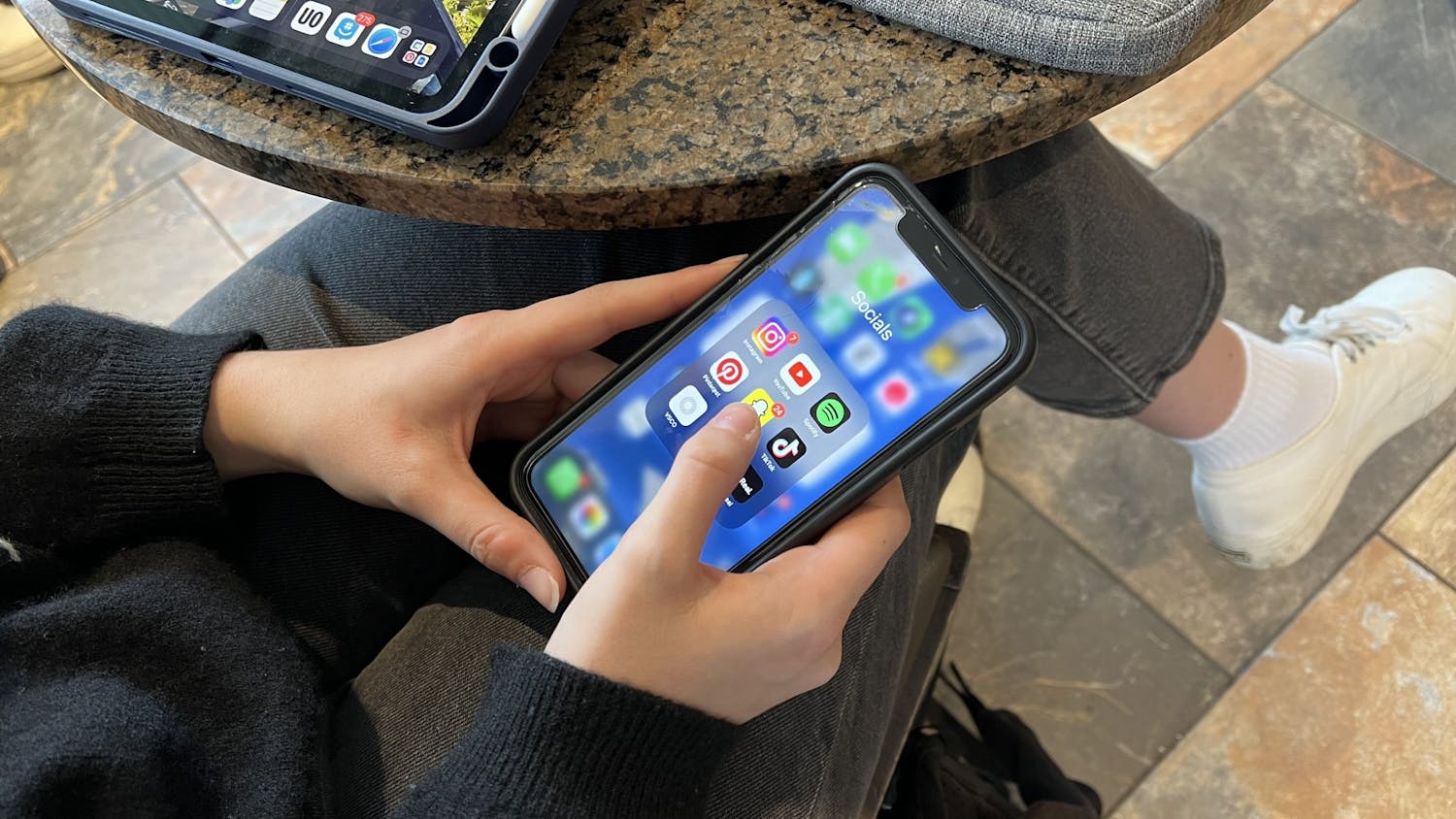Friday, Aug. 27 marked the fourth consecutive day of Black Lives Matter protests in Madison following the shooting of Jacob Blake. But something was different this time — only about 50 people showed up to the demonstration to protest police brutality.
Initial anti-racism demonstrations followed the killing of George Floyd, a Black man, by a white Minneapolis police officer in May. In the midst of both series of protests, activists turned boarded-up State Street buildings into artistic commentary on institutionalized racism.
“We don’t want to guilt people for not showing up physically,” said a volunteer for local Black Lives Matter organizing group LINK. who requested only to be named as Penelope. “But we want people to recognize privilege and encourage support for Black liberation organizations.”
As protestors spoke about racism and police brutality on Capitol Square, some passersby joined in. But many people, predominately white and without masks, glanced at the small crowd and carried on with their workouts, phone calls and brunches.
This particular event came two days after Kyle Rittenhouse, a 17-year-old who’s social media is riddled with “Blue Lives Matter” and pro-Trump content, shot three anti-racism demonstrators, killing two and injuring one on Tuesday, Aug. 25th, in Kenosha. Viral video footage shows Rittenhouse bearing his gun as he walks past police shortly after the shooting. He was not arrested until the following day after going back home to Illinois and President Donald Trump later defended the teenager’s actions.
On Friday, LINK. representatives encouraged an open discussion on racial profiling, citing the killing of Tony Robinson, an unarmed biracial Black man, by white Madison police officer Matt Kenny in 2015. Kenny was placed on temporary paid administrative leave pending an investigation, which exonerated him; he did not face criminal charges.
“Why is Matt Kenny still on the street with a weapon?” Penelope questioned. “He seems unfit to protect other people’s lives considering he takes them.”
Robinson’s death marked the second time Kenny evaded criminal charges after using lethal force. In 2007, he shot and killed a man who aimed a pellet gun in his direction.
According to one protestor, patrons dining at Coopers Tavern, where prominent local activist Yeshua Musa was arrested this summer, took pictures of demonstrators and laughed at them as they enjoyed their meals earlier that week. Musa was charged with federal extortion for allegedly threatening to damage the restaurant’s property. He faces up to forty years in prison.
“That’s what they do to Black leaders,” Penelope said of the police who arrested Musa. “They criminalize them.”
On the Capitol Square, LINK. representatives lead chants of “Abolish the police” and “Fuck 12,” pushing for law enforcement funding to be reallocated to subsidize healthcare, housing and transportation for underprivileged communities. According to LINK. volunteer and social worker Maria Tran, deeply rooted systemic racism in police departments feeds into a cycle of poverty and violence in Black communities.
“Trauma is built into the every-day lives of Black people,” Tran said,
Tran went on to note that felonies and evictions, which are disproportionately dealt to communities of color, can prevent access to necessities like housing. Those with restricted access, Tran explained, often turn to coping mechanisms like liquor. There’s a lack of dialogue about mental health in communities of color, according to Tran. Though police officers are often dispatched to respond to mental health crises, they are not adequately trained to do so, demonstrators claim.
“Social workers should be the first ones on the scene,” Tran said of when Emergency Medical Services are called. “The lens should be rehabilitation.”
LINK. representatives also claim the University of Wisconsin-Madison has not taken adequate action to eradicate racism from its campus. Chancellor Rebecca Blank has not responded to the organizations’ list of anti-racism demands, including a request to remove Chamberlin Rock, which sits on the crest of Observatory Hill, Penelope added. The boulder was named after former university Thomas Crowder Chamberlain, but white students often referred to the landmark using a racial slur.
“It’s deeper than just a rock,” Penelope explained. Protestors also demanded removal of the Bascom Hill statue depicting Abraham Lincoln, who — though is famed for the Emancipation Proclamation — opposed racial equality.
A UW-Madison student created the Instagram account @bipocatwisco in June as a forum to share campus experiences submitted by students of color. The account’s feed alleges white students casually use the N-word and even threaten violence against students of color. One student recalled a pick-up truck driver yelling the N-word in their direction and nearly hitting him with his vehicle. Another recalled a white student laughing and recording as police drew their guns and surrounded Black man outside a dorm building.
Friday’s demonstration also included dialogue regarding the campus “Smart Restart” to university instruction, which includes a hybrid of in-person and online courses. As colleges reopen across the county, many are experiencing COVID-19 outbreaks despite efforts to suppress the virus.
Notre Dame University, which required students to be tested for COVID-19 before returning to campus, reported a 19 percent positivity rate just two weeks after resuming instruction. The ongoing pandemic and anti-racism demonstrations are not unrelated: UW-Madison’s student body is largely white and Black people are more likely to die from COVID-19 infections.
“Let’s have a moral restart,” Penelope said, noting that staff such as janitors are often sidelined from conversations surrounding campus safety.
LINK. representatives encouraged demonstrators to send emails to university leadership demanding institutional change. The @bipocatwisco Instagram account started a petition with a list of demands aimed at university leadership, including a request to defund the UW-Madison Police Department; the petition has gained over 2,000 since it went live Monday.






